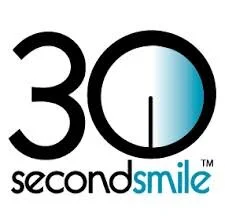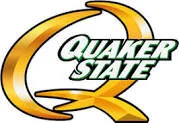
Partnership with our clients is the key to success
We bring extensive expertise in a broad range of demographics & industries
Demographics
Millennials
Gen Z
Baby Boomers
Children, Tweens & Teens
Consumers & Professionals
Business to Business
Multicultural
Industries
Appliances
Automotive
Beauty
Corporate Social Responsibility
Devices
Diet
Direct Response
eCommerce
Environment
Fashion
Financial & Insurance
Fitness
Furnishings
Health & Nutrition
Housewares
Media
Medical
Nonprofit & Government
Packaged Goods
Pharmaceuticals
Retail
Security
Technology
Tools & DIY
Travel & Entertainment
Utilities
Our Partners
What People Are Saying
“Carla makes any project she's involved in a better one … with a greater chance of huge success.”
— Mark Scarpaci - DR Writer USED Alrady
“From the moment we started working together, her approach, insights, experience brought a new level of thinking…From someone in the Direct to Consumer business for 15+ years, that speaks volumes.”
— Marina Randolph - President, Digital & Ecommerce, Tone It Up
“Carla’s commitment to a client’s success is the baseline for her performance. Her professionalism, participation, excellence in project design, execution and post project evaluation exhibit the mark of a true expert in the industry.”
— Katie Williams – President, Ideal Living
“We have called on Carla to research a wide range of products. In every case she has supplied us with key information which contributed to creating a successful infomercial.”
— Doug Garnett – Founder & President at Protonik, LLC USED Already
Case Studies
CHALLENGE
Kreg makes joining wood simple. Even more importantly, being able to join wood is the gateway to an entire realm of “building with wood”. However, the do-it-yourself market was not aware of Kreg, Kreg Joint simplicity, and how the result opens up an entire world of building and repair.
STRATEGIES
The agency first developed an in-store sales video. Then they used the video for strategic planning research. This research clearly showed that the Kreg was a strong solution for do-it-yourselfers who wanted to build with wood but had been intimidated by the expertise they feared they needed to be a “woodworker”.
TACTICS
The agency used the findings from the research as a blueprint to build the show.
Their long-form show demonstrates how easy it is to build quality wood projects with Kreg regardless of the skill level of the builder. (After all, “if you have a drill, a saw, and a Kreg, you can build about anything.”) And, this show expands Kreg’s brand by building the promise that Kreg is a company with woodworking knowledge DIY’s can depend on.
RESULT
During the dramatic start of the economic crisis in the fall of 2008, the new half hour show for the Kreg Jig was tested and beat the on-air sales goal by 20%. As the campaign rolled out, direct sales results continued to improve despite the deepening crisis. The show dramatically increased web traffic and interest in the product, and retail sales for the Kreg Jig rose to become one of the top 5 tools at Lowe’s, Rockler, and Amazon.com.
CHALLENGE
Presenting a new and very unique toothbrush, a challenging task, was achieved with a polished show that preformed well but had room for improvement. The next question was how to tweak the show to move it from “working” to a “winner. ”
STRATEGIES
Conduct market research with consumers to determine how to tweak the show Specifically, determine what was missed, what was misunderstood or lacking and how to convey the information so consumers hear the message, understand it and are compelled to purchase.
TACTICS
We learned that, like most shows that work, consumers were very interested in the product but were impeded by many, albeit basic, missing elements. Questions such as: is it safe; does it harm tooth enamel or damage gums; how is the toothpaste applied; how does one size fit all; and how long do the batteries last were among the answers consumers were looking for in order to buy.
RESULTS
The first reworked version of the infomercial, with a few simple changes and requiring no re-shooting, generated a 20% drop in CPO, enough to move it from a marginal show to a working model. Subsequent tweaks based on the research were implemented to move the needle even higher in successive versions of the show.
CHALLENGE
How to penetrate the mass market with a premium, $900 vacuum cleaner which was marketed traditionally through an in-home sales appointment. Overcome mass perception that good vacuum cleaners cost only $400.
STRATEGIES
Conduct market research with consumers to translate key product benefits into powerful selling points. Use research to determine most effective product demonstrations with target audience.
TACTICS
Produce an infomercial that demonstrated the Electrolux vacuum powerfully while moving the needle with audiences and soliciting qualified leads. An offer was constructed to prompt potential customers to invite a sales representative into their homes.
RESULTS
The infomercial generated $6 in sales for every dollar spent in media – an exceptionally high sales to media expenditure ratio for direct response television. In an effort to maximize response and conversions, the infomercial was tested with consumers at rough-cut stage and again after it rolled out. It was tweaked at each point leading to even better results.
CHALLENGE
In 1996, Quaker State was the second-largest selling motor oil in most of the nation. However, in the important southeastern market, they were running a distant seventh. The problem dated back to the 70's when false rumors began to spread in the Southeast saying that Quaker State was of inferior quality. For more than 20 years, Quaker State tried to shatter the myth with specially designed regional advertising. But 30-second spots, radio campaigns, print ads, and special promotions didn't make a dent.
Quaker State turned to the half-hour format in hopes that it could be the answer. But while infomercials had proven their ability to generate direct sales, Quaker State's primary goal was to improve brand image. This unique goal called for a unique solution that would change brand image and long form was the only direction left. The production company created a "documercial" --"The Winning Formula," taking advantage of Quaker State's sponsorship
of Hendrick Motorsports, the number one team in NASCAR racing, the most popular sport in the Southeast. It showed a behind-the-scenes look at the world of stock car racing, explaining why they used Quaker State in their race cars and demonstrated its ability to withstand the torture that motor oil endures in a 700 horsepower engine. To measure the effect a call in sweepstakes was offered. The response was positive but the client wanted a
long term change and embedded image.
STRATEGIES
A two pronged market research project was conducted to investigate the effects and tweak the show to further improve response. We found that those interested in racing we impressed but ordinary drivers were less moved. As well , small missing elements engendered skepticism. Changes were easily incorporated in the show to overcome the obstacles. The producer also integrated regular Southeasterners into the show who had driven hundreds of thousands of miles using only Quaker State in their engines. When those engines were taken apart in front of the camera and were revealed to be remarkably clean and free of part wear, even the most skeptical viewers turned around.
RESULTS
After decades of failing to change the perception of their product in the Southeast, Quaker State's image suddenly did an about turn. In research conducted before "The Winning Formula" aired, only 10% of "do-it-yourselfers" said they would consider purchasing the product. In post-airing groups, 75% of respondents said they would be willing to try it. Sales of Quaker State in the Southeast took off and haven't slowed down since. The show was so effective that Quaker State tripled the media budget and aired it nationally.






